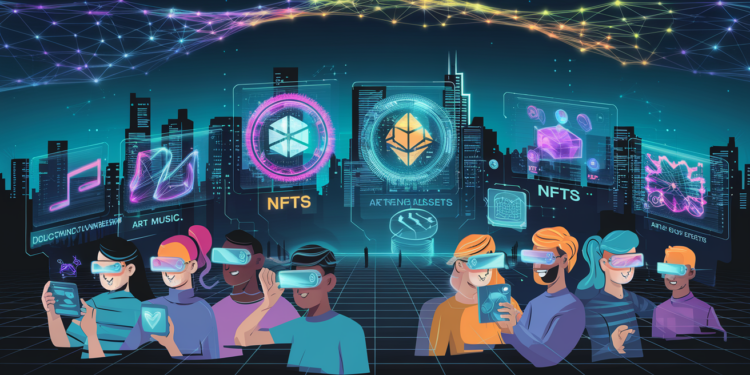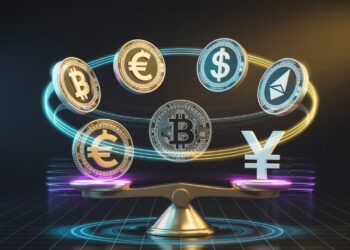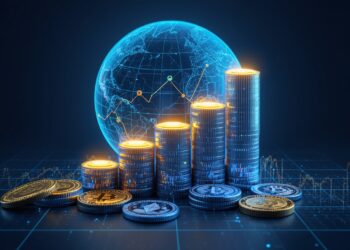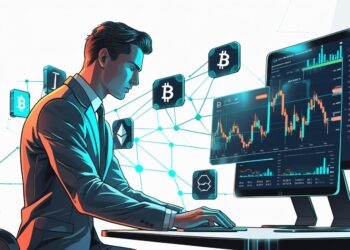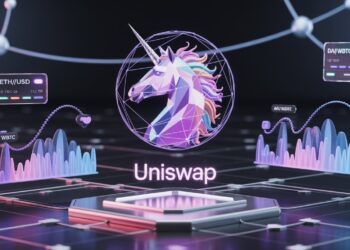Introduction
NFTs are changing how we see art, gaming, and investments online. You may have heard of artists selling digital art for millions or celebrities jumping into the scene. These tokens are making a buzz, but many still don’t fully understand what they are. Knowing the basics helps you avoid scams, make smarter choices, and spot true value. This article breaks down everything you need to know about NFTs, from how they work to what’s coming next.
What Are NFTs and How Do They Work?
Definition of NFTs
NFTs, or non-fungible tokens, are digital assets that represent ownership of a one-of-a-kind item. Unlike money or cryptocurrencies such as Bitcoin, each NFT is unique — no two are exactly alike. Think of an NFT as a digital certificate of authenticity for art, music, or even virtual land. They hold a special digital identity that proves who owns what.
Underlying Technology
NFTs are stored on blockchains, which are like digital ledgers that record every transaction. This tech makes sure that ownership is real and cannot be faked. When you buy an NFT, the blockchain confirms you’re the rightful owner. Smart contracts, which are digital agreements, automatically handle transactions and royalties. They ensure creators get paid each time their NFT sells again in the future.
How NFTs Are Created and Sold
Creating an NFT is called minting. It turns a digital file — like a piece of art, a song, or a video — into a unique token. Popular platforms such as OpenSea and Rarible make it simple to mint and list NFTs. Once listed, buyers can browse, bid, or buy directly from these marketplaces. Selling an NFT often involves setting a price or auctioning it to the highest bidder.
The Market Landscape and Current Trends
Market Size and Growth
The NFT market has exploded in recent years. Total sales reached over $24 billion in 2022, up from just a few million in early 2021. This rapid growth shows how much people are investing in digital assets. Major sales, like Beeple’s artwork selling for $69 million at Christie’s, made headlines worldwide. The craze isn’t slowing down anytime soon.
Popular NFT Categories
NFTs come in many forms, but a few categories dominate. Digital art remains the most popular, with unique images and animations. Collectible cards, like CryptoPunks, are highly sought after as digital trophies. Music artists now release albums as NFTs, giving fans exclusive access. Gaming items, virtual clothes, and land in virtual worlds like Decentraland are gaining attention. High-profile sales help push the industry forward.
Major Players and Platforms
Big names in the space include OpenSea, Rarible, and NBA Top Shot. They each have different audiences and features. The platforms with the largest user bases tend to have the most listings and sales. Top creators and influencers like Beeple, Pak, and Fewocious continue to push the limits of what’s possible with NFTs. They shape trends and bring new audiences into the scene.
The Benefits and Opportunities of NFTs
For Creators and Artists
NFTs give creators new ways to earn. They can sell digital art directly to fans without middlemen. Smart contracts also let artists earn royalties every time their work is resold. This creates a steady income stream. Plus, NFTs help fans feel closer to their favorite creators by offering exclusive content and access.
For Collectors and Investors
Owning NFTs provides proof of digital ownership, like a certificate of authenticity. This makes collectibles rare and valuable. Some NFTs have appreciated in value, offering potential profits. Diversifying investments into digital assets can also reduce risks compared to traditional markets.
Real-World Applications
NFTs aren’t just for art. Gaming uses blockchain tokens for in-game assets. Virtual worlds sell land parcels as NFTs, letting players build and trade. Owners can also license their NFTs, controlling how their artwork is used across different platforms. These uses are opening new worlds of opportunity.
The Risks and Challenges Associated with NFTs
Market Volatility and Speculation
NFT prices can swing wildly. What’s hot today might crash tomorrow. Many buyers are caught up in hype, which can lead to losses. The market feels like a rollercoaster — promising high rewards, but with big risks. Some experts warn about a possible bubble that could burst.
Legal and Copyright Concerns
Owning an NFT doesn’t always mean owning the actual rights. Sometimes, buyers get only a license, not full copyright. That’s confusing and can lead to legal trouble. Plus, fraud and counterfeit NFTs are common. Scammers create fake listings or sell stolen art, so verify everything before buying.
Environmental Impact
NFT transactions on certain blockchains, especially Ethereum, use a lot of energy. Critics say this damages the environment. While some platforms work on greener tech, concern remains. Industry leaders are exploring more sustainable methods to keep NFTs eco-friendly.
How to Safely Buy, Sell, and Store NFTs
Buying Tips
Always check the NFT’s history and ownership. Trusted marketplaces and verified creators reduce fraud risk. Read the description carefully and verify the digital file. Remember, if a deal sounds too good to be true, it probably is.
Selling and Minting NFTs
Set realistic prices and consider adding royalties to earn from future sales. Use quality digital files and clear descriptions. Good listing photos and tags can attract more buyers. Keep everything transparent and honest.
Storage Solutions
Store your NFTs in a secure digital wallet. Hardware wallets (cold storage) are safer but cost more. Online wallets (hot wallets) are easier to use but more vulnerable. Protect your private keys and avoid scams by double-checking URLs and links.
Future Outlook and Expert Opinions
Emerging Trends and Innovations
NFTs will likely link more with virtual reality and the metaverse. We’re seeing concepts like fractional ownership, where many people share one expensive NFT. This makes high-value assets accessible to more people. NFT bundles, offering collections sold at once, will also grow in popularity.
Regulatory and Legal Developments
Governments are starting to draft rules for NFTs and cryptocurrencies. Clearer laws will help reduce scams and protect buyers. Regulations may also impact how NFTs are taxed or sold, affecting industry growth and investor confidence.
Expert Perspectives
Top industry voices believe NFTs are just getting started. Artists see new ways to express themselves, while tech analysts predict wider mainstream acceptance. Some say NFTs could change how we view ownership and property forever. The key is staying adaptable and informed.
Key Takeaways and Actionable Tips
- NFTs are unique digital assets backed by blockchain tech.
- They open new doors for creators and collectors alike.
- Do thorough research before buying; verify authenticity.
- Keep your digital assets secure in reputable wallets.
- Follow market trends, but stay cautious about hype.
- Understand that digital ownership can be complex — know your rights.
- Think of NFTs like digital collectibles or art with a story.
- Be responsible and avoid rushing into investments.
Conclusion
NFTs are more than just a passing trend — they could reshape how we buy, sell, and own digital assets. From art to virtual worlds, they offer new chances for creators and collectors. However, risks like market swings and legal issues are real. The secret is staying educated, acting wisely, and being cautious. Keep an eye on this evolving space, but remember to balance excitement with careful planning. Your digital future starts here.
Join Us : Twitter | Website | GitHub | Telegram | Facebook | YouTube



